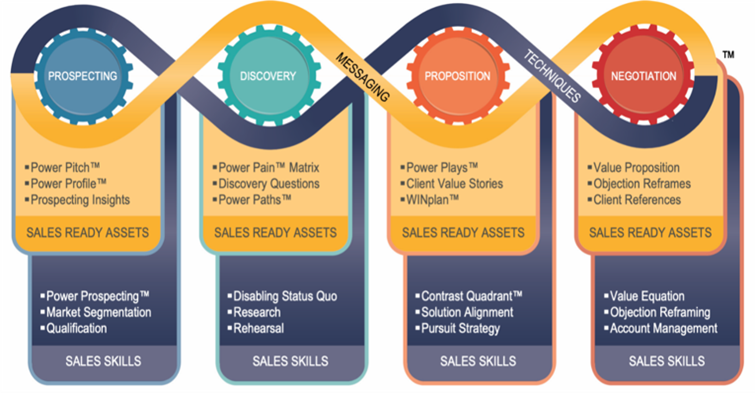A multi-national software provider’s sales cycles was running 12-18 months on average. To say deal velocity was slow would be an understatement. When they engaged Mereo to address this, we conducted a win-loss analysis and discovered that the majority of the sales cycles were really about three to four months. What filled the other part of the year?
Well, it was a combination of two things. The first was an extensive exploration phase by the client — they were “kicking the tires” to determine if their problem was significant enough to even address. While members of the buying committee were engaging “solution providers,” they were not even looking for solutions yet. They were researching the challenges and seeking insights and thought leadership that would help them conceptualize the problem. Second, the buying organizations were mostly retailers or brand companies selling directly to consumers. As a result, peak season played a major role in timing, in essence shutting down three to six months of buying window each year over the fall and holiday season.
This one example goes to show: Overall B2B buying has gotten more complicated. Around three-quarters of B2B buyers consider their last purchase difficult or complex (Gartner). Buyer’s internal processes account for part of this complexity: Most committees now involve 6 to 10 decision-makers and tend to engage more than 10 channels along their buying journey. Talk about too many cooks in the kitchen reading too many recipe variations at once.
Yet, sellers add friction to the modern buying journey, too — and this is where your selling team has influence and where I want to focus your efforts ahead.
NAVIGATE YOUR SALES FORCE AWAY FROM ADDING TO BUYER FRICTION
If your sales force is stuck on selling to buyers, they are adding friction to a buyer journey that is already challenging enough.
Sellers complicate buyer’s lives when …
- They push their solution before buyers fully understand their pains.
- They focus on their organization and the features of its products or services instead of the buyer’s goals.
- They fail to provide consistent value touchpoints on relevant channels along the buying journey.
- They focus too much on just one member of the buying committee and fail to serve all members’ needs.
- They do not differentiate their solution or share a compelling value story of how it will make a difference for the buyer.
Buyers do not need salespeople. Buyers need problem-solvers, industry mentors — trusted advisors. They require sellers who Seek to Serve, Not to Sell® as they navigate their problem and explore the solutions available to them.
AND RE-ROUTE YOUR SALES FORCE TO SEEK TO SERVE™
A sales force that serves as a buyer’s trusted advisor builds trust, fosters value — and wins deals sustainably. The goal remains the same (to sell your solution) but with an essential twist (to focus first and foremost on the buyer).
A trusted advisor who Seeks to Serve™ …
- Asks questions and listens.
- Helps buyers best understand their challenges and break free from the harmful status quo.
- Acts as an expert on their buyer’s industry, business and role — bringing forth key insights and challenges for a buyer’s risks and opportunities.
- Provides consistent value across buying channels.
Take that multi-national software provider I mentioned at the start: The lesson we learned from our analysis was that the buying journey was long and complex. But the sales cycle was actually fairly rapid once they engaged in buying. The sales organization discovered they needed to ramp-up their thought leadership efforts to gain mindshare and help educate the buyers during the exploration phase. The key was to minimize expense (hard dollars of marketing campaigns as well as staff cycles) while offering meaningful insights that the buyers ideally correlated with them as the trusted advisor.
Enable your selling teams to simplify the buying process and stand out from the norm. Download The Complete Sales Organization Guide to Seek to Serve, Not to Sell. Reach out to our experts for help enabling your sales force with the value selling knowledge, tools and skills to put it all into practice.











